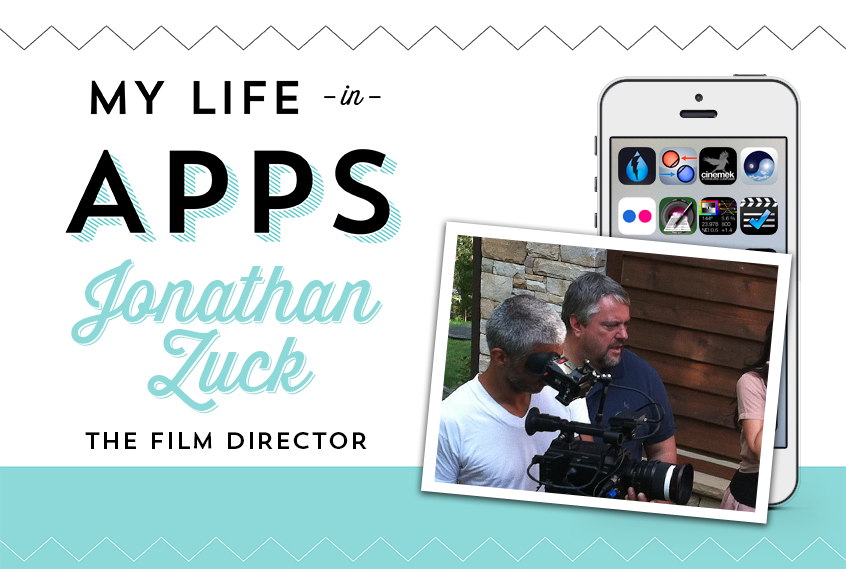I have a second life (no not a Second Life!) as a photographer and filmmaker. You can see some of my work here: www.JonathanZuck.com. When I’m not trying to make the world a better place for app developers, I’m making movies, commercials and photographs. In fact, we just completed our first feature film, Within the Darkness. I don’t generally make my photographs and films with a mobile device (though my cinematographer shot an amazing Bentley Ad with an iPhone!) but we use a lot of apps to get the job done! There are 3 phases of a film (or staged photograph): Preproduction, Production and Post-Production. We use apps mostly in the first two.
Preproduction
During preproduction, we scout locations, cast actors, storyboard and establish a shoot schedule. Often I find myself using Flickr to scout locations initially and then use Director’s Viewfinder to take photos when I go in person to the location. Director’s Viewfinder lets us easily match the look of the cameras and lenses we’ll be using once on set. We try to capture locations from every angle so they can be later used in storyboarding.
Perhaps the most time consuming part of preproduction is planning your shots. One rule of thumb is that you want to cover every line of dialog in three different shots…so they add up. The first step is to plan the look of the shot and for that, my cinematographer and I generally use Storyboard Composer because of the ability to incorporate location photos and integrate movement into the board. Once we’ve established the look of the shot, we plan how we will accomplish it and for that, we use Shot Designer, to lay out the shot and plan subject, camera and light placement.
Once we know the shots we need to get, we need to schedule the shoot days. We shoot completely out of order, group proximate locations together and require different actors in each scene, so there’s quite a bit of organization! The exteriors can be the trickiest and we begin by checking Dark Sky, for the weather at the location and pick a primary and backup day for each one. Once we schedule the day, we use LightTrac, to determine the best time of day for each setup. Using LightTrac we can see where the sun will be in the sky at a given location, on a given day at a given time. It’s been invaluable to planning a shoot. Finally, to compile the whole schedule, we use Shot Lister. With the recent integration of Shot Lister into the Production Minds Platform, Shot Lister has become the best tool to use both in preproduction and production.
Production
When it comes time to actually shoot the film (or photo), we put apps in hands of 3 crew members: the Cinematographer, the Assistant Director and the Script Supervisor. It’s the Cinematographer’s job to execute our shot plan on set so he or she is armed with our storyboards and shot designs and together with the grips and gaffers, sets up the shot. One of the handiest apps for cinematographers is PCam, a multi-purpose calculator for things like field of view and depth of field. My cinematographer still uses a light meter but in a pinch Cine Meter does an amazing job.
The Assistant Director keeps us on schedule and is generally using the Shot Lister app to help. The AD on an indie film will often ensure that we have signed releases from all of the talent and the locations otherwise it’s little old me for a photo shoot. A great app that has replaced paper releases is Easy Release.
Finally, one of the unsung heroes on set is the Script Supervisor. It’s his or her job to make sure we shoot the whole script, maintain continuity and to record our favorite takes and uses a couple apps. First, there’s PDFOpen, which allows annotating PDFs. We draw lines through the script as we shoot to make sure we have sufficient coverage. IF there aren’t 3 lines through every line of dialog, we know we skipped something and go back. Scripty also takes a photograph at the start and finish of every scene and associates that with a portion of the script in PDFOpen. That way, when we go back for another take, we can check to see how full the glass was, and how someone’s clothes looked at the beginning of the scene so we don’t end up on this list! Scripty also uses Shot Lister to note favorite takes.
So, as you can see, even if you’re not shooting the next blockbuster ON your phone, apps have become an essential part of modern filmmaking. I certainly wouldn’t want to go back!
